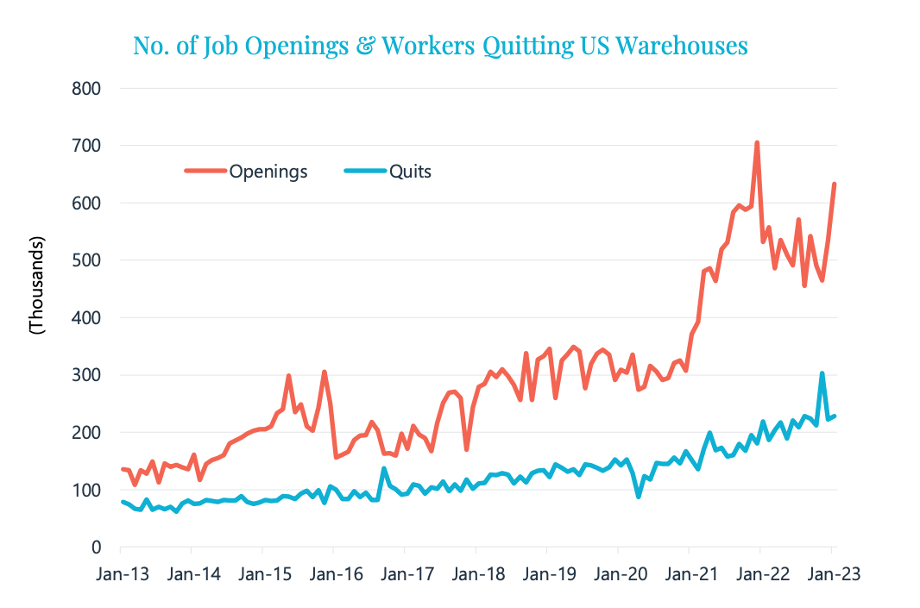As the world becomes increasingly digital, e-commerce has been growing at an unprecedented pace. With more and more people opting for online shopping, the demand for efficient and reliable logistics and warehousing solutions has risen dramatically. However, one of the biggest challenges facing end-users in the logistics and warehousing industry is labor. In fact, according to a recent report, labor is still perceived to be the biggest challenge facing end-users. While rising labor costs are a significant factor, it is labor availability that poses a more pressing issue.
The labor shortage in the logistics and warehousing industry is not a new phenomenon. ”The turnover of warehouse labor staff was as high as 43% in 2022 and it seems as though things haven’t changed based on [Interact Analysis’s] discussions at ProMat.” According to discussions at ProMat from Interact Analysis’s Post-Show Analyst Report, the labor shortage continues to be a major concern for end-users.
This shortage has made it increasingly difficult for end-users to manage their manual operations. In fact, “Vendors commented that ROI discussions with potential customers have become much easier (and almost irrelevant) in the past 12 months as manual operations are becoming impossible in certain workflows due to the lack of labor.” This is where AMRs come in.

AMRs, or Autonomous Mobile Robots, have been gaining popularity as a solution to labor challenges in the logistics and warehousing industry. These robots are designed to perform repetitive tasks, such as transporting goods from one location to another, without the need for human intervention. AMRs can be programmed to follow specific routes, avoid obstacles, and even communicate with other robots to optimize their performance.
The adoption of AMRs has several benefits. Firstly, AMRs can help reduce labor costs by automating repetitive tasks that would otherwise require human labor. This can help end-users achieve significant cost savings in the long run. Secondly, AMRs can help end-users optimize their workflows by streamlining the movement of goods within their facilities. This can help improve productivity and efficiency, leading to faster turnaround times and improved customer satisfaction.
“Due to the aging population, coupled with the growth of e-commerce, it’s unlikely that the labor challenges will alleviate in the short-term and will likely persist over the coming years.” The rise in e-commerce has led to an increase in demand for warehousing and logistics services, which has further exacerbated the labor shortage. AMRs can help address this issue by performing tasks that would otherwise require human labor, freeing up workers to focus on more complex tasks that require human skills, such as quality control, customer service, and problem-solving.

Summary:
Labor challenges continue to pose a significant problem for end-users in the logistics and warehousing industry. While rising labor costs are a concern, the shortage of labor is a more pressing issue. The adoption of AMRs can help end-users address these challenges by automating repetitive tasks, optimizing workflows, and reducing labor costs. As the world becomes increasingly digital, the adoption of AMRs is likely to become more prevalent in the logistics and warehousing industry.
Contact us to learn how we can help you enhance your operational efficiency while significantly reducing costs.



